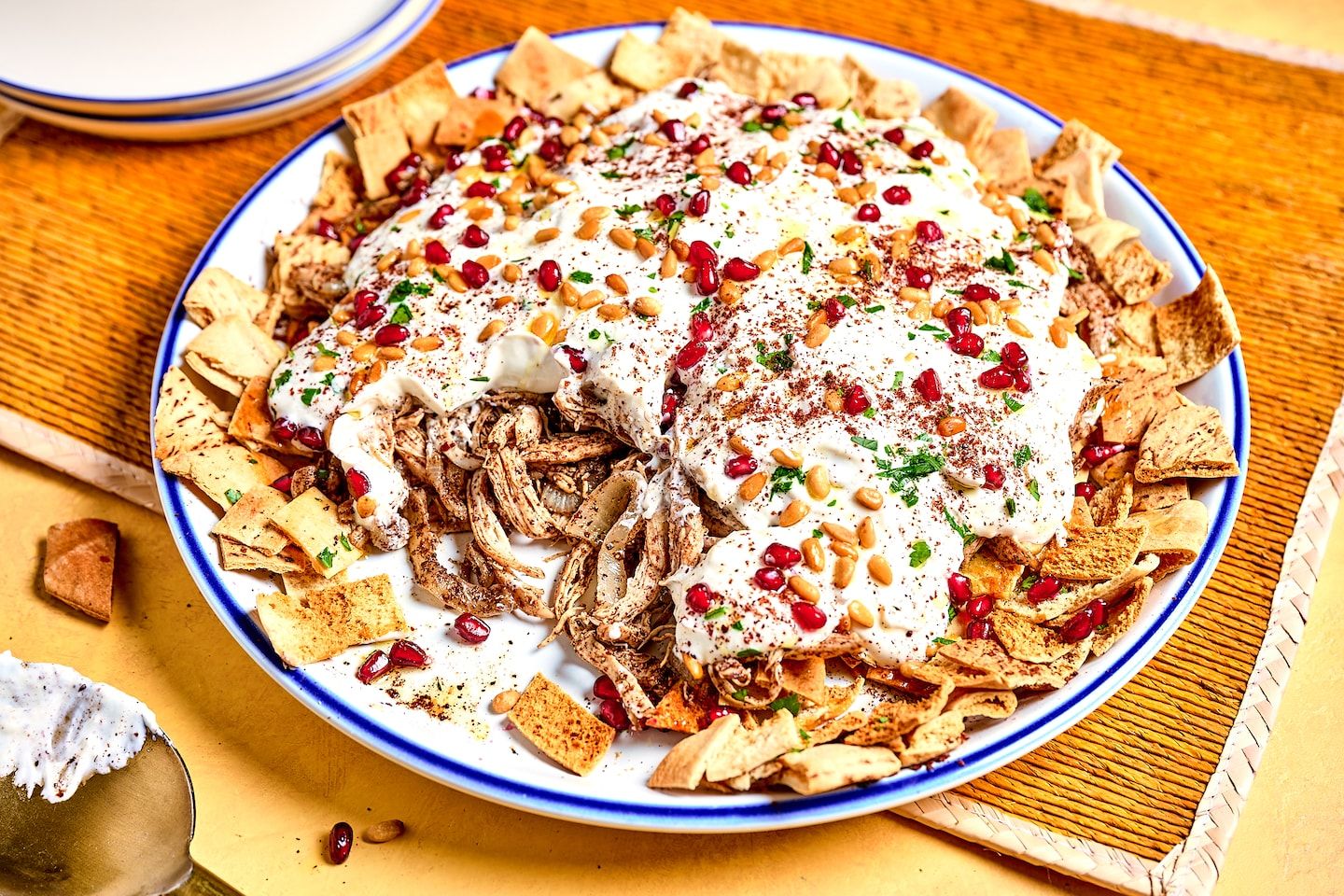This Palestinian fatteh of bread, chicken and yogurt honors tradition
Comment on this story Comment Gift Article Share
I sit before a soup bowl, savoring torn pieces of fluffy pita bread soaked in rich chicken broth and dusted with allspice, which my mother has prepared in my Philadelphia home as she cares for me two weeks after the birth of my third daughter. Wp Get the full experience. Choose your plan ArrowRight It transports me to when the scent of her broth filled my childhood home in Jerusalem, an almost daily preparation that served as the backbone to many of our meals. In the moments before dinner, she would tear bread and douse it in the flavorful broth as a snack to tide me over. On the lucky days, she would shred into my bowl remnants of any meat clinging to the bones, but even without the meat, the rich, broth-soaked bread was enough.
This humble dish, usually referred to as fatt or fatteh in my Palestinian dialect — a term derived from an Arabic verb that means to crumble — is shared across Arab households. Bread is torn and tossed into soups or soaked in various cooking liquids, and is often garnished with meat, vegetables or legumes.
Advertisement
Tracing the lineage of fatteh takes us back to a dish that was reportedly the prophet Muhammad’s favorite — tharid. Essentially, bread, usually old or stale, torn and soaked in broth, tharid is also rooted in an Arabic verb meaning “to break apart.”
Bread, the common thread in tharid dishes, encapsulates the essence of Arab hospitality and culinary culture. The very idea of using it to bulk up a meal — a practice in many cultures that is probably rooted in scarcity — allows people to stretch valuable ingredients such as meat to feed large families and crowds, reflecting the spirit of sharing and communal dining prevalent across the Arab world.
This tradition throughout Arab history isn't surprising considering that wheat is native to Western Asia and that bread, a unifying element of our culinary traditions, has been a cornerstone of Arab cuisine for centuries.
Advertisement
Over time, however, the simple dish of tharid has evolved, with cooks adding rice, legumes, vegetables or yogurt, and has become known by different names across various Arab countries, including the following:
Mansaf, the national dish of Jordan — actually a Bedouin dish found across the Levant — is a variation of tharid where bread is topped with bone-in chunks of lamb cooked in a kashk-like yogurt sauce. Over time, it has come to include rice as well.
In the Arabian Gulf area, it is still referred to as tharid, although sometimes the name tashreeb is used. Tanur, or oven, flatbread is topped with a broth and meat stew, although at times it includes vegetables as well.
North African countries also have several variations, such as rfissa in Morocco, in which msemmen bread is topped with a chicken, lentil and fenugreek stew. In Algeria it is referred to as chakhchoukha, and there semolina bread is topped with a tomato sauce and at times can include meat, chickpeas and even boiled eggs (not related to Tunisian shakshuka).
In Egypt, fatteh is the most commonly used name, and that dish involves bread topped with rice, stewed meat and a garlicky tomato sauce.
As we approach the celebration of Eid Al Adha, (or “Feast of the Sacrifice,” which commemorates the Quranic tale of the prophet Ibrahim’s willingness to sacrifice his son as an act of obedience to God) where meat is symbolic, and large gatherings are the norm, these dishes become not just practical culinary choices, but also hallmarks of the holiday’s ethos: sharing, communal feasting and unity.
Just as tharid has changed over time, dishes with bread at their foundation continue to transform, encompassing shifts in taste, ingredients and cultural influences. I encourage you to embrace this dynamism and experiment with variations.
Advertisement
One of my favorite versions of fatteh is a spin on the traditional Palestinian dish of musakhan, a peasant food traditionally featuring taboon, a Palestinian flatbread, topped with sauteed onions, sumac and roast chicken. My version reimagines it as a fatteh, with even more layers of flavor.
This continual reinvention of traditional meals mirrors how we ourselves continue to move forward even as we cherish our past.
Gift this article Gift Article
Source: The Washington Post


